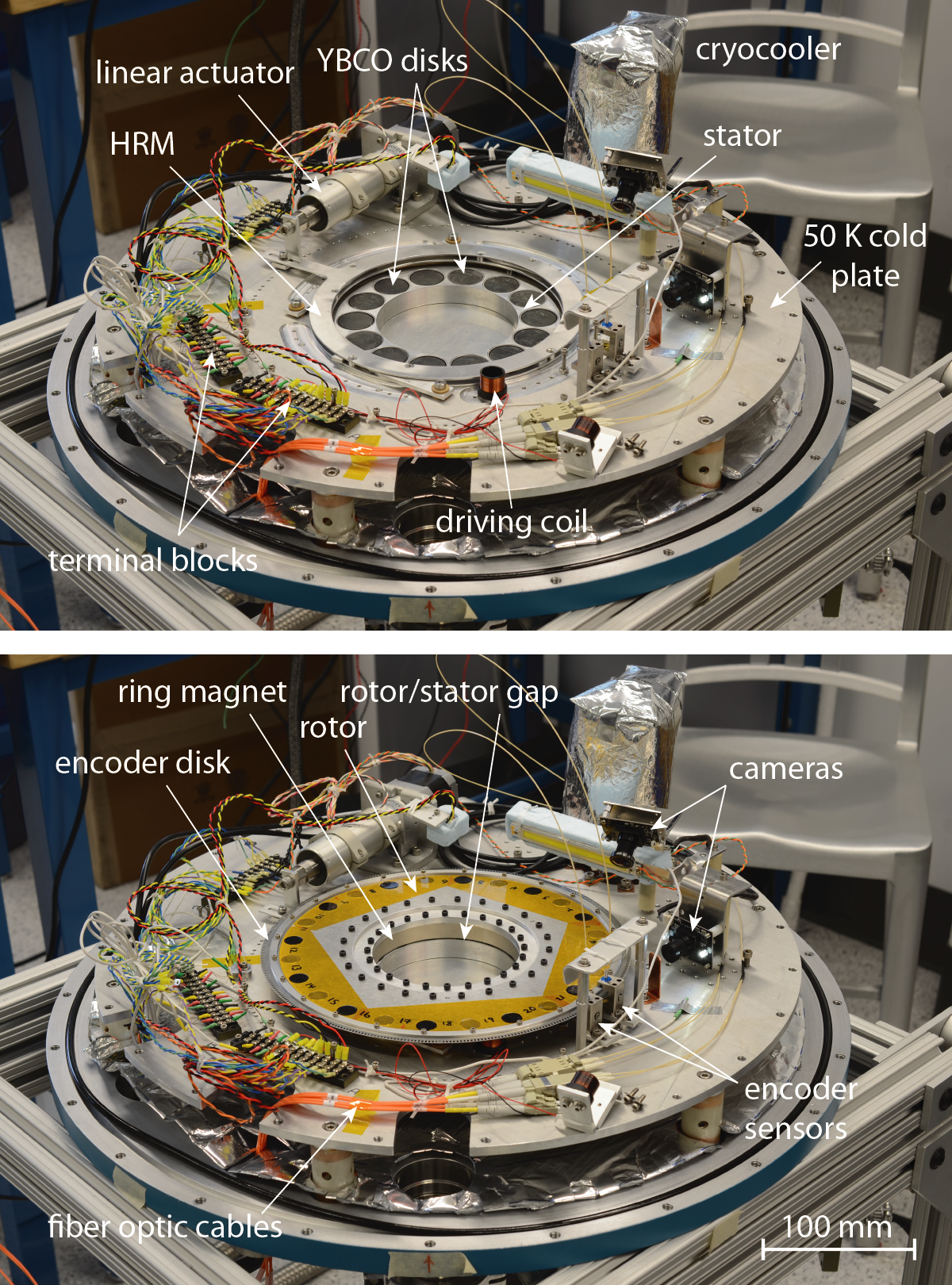Overview
The APEX-SZ instrument is described in “Invited Article: Millimeter-wave bolometer array receiver for the Atacama pathfinder experiment Sunyaev-Zel’dovich (APEX-SZ) instrument.” Schwan et al. (2011) Rev. Sci. Instrum., 82, 091301. (arXiv)
APEX is an on-axis Cassegrain telescope with a primary mirror that has a diameter of 12 meters. A photograph of the APEX telescope is shown in panel (a). The telescope was designed to observe sub-millimeter wavelength signals, so the surface accuracy of the telescope mirrors is particularly good for making millimeter-wave observations of the CMB. The APEX telescope is installed in the Atacama desert in Chile, and it is has been operating since 2005. The transmittance of the atmosphere at the APEX site is among the best in the world for ground-based millimeter-wave and sub-millimeter-wave observatories, because the telescope is sited at an altitude of 16,700 feet.
The APEX-SZ receiver is one camera mounted at the focal plane of the APEX telescope. A photograph of the APEX-SZ camera is shown in panel (b). The detector array in the APEX-SZ receiver contains 320 superconducting “spider web” bolometers cooled to 280 mK with a pulse tube cooler and a He-10 refrigerator. The detector array is shown in panel (c), and a close-up view of one detector is shown in panel (d). For scale, each spider-web bolometer is 4 mm in diameter and the entire detector array is 18 cm in diameter. The transition edge sensor (TES) is shown in panel (e). The instrument optics produces a 1 arcmin FWHM beam on the sky. Observations are currently made in one spectral band centered on 150 GHz, so the APEX-SZ receiver is sensitive to the SZ decrement.

Publications
 “A Large-Diameter Hollow-Shaft Cryogenic Motor Based on a Superconducting Magnetic Bearing for Millimeter-Wave Polarimetry.”
“A Large-Diameter Hollow-Shaft Cryogenic Motor Based on a Superconducting Magnetic Bearing for Millimeter-Wave Polarimetry.”
Johnson, B. R., Columbro, F., Araujo, D., et al. (2017) Rev. Sci. Instrum., 88, 105102. (arXiv)